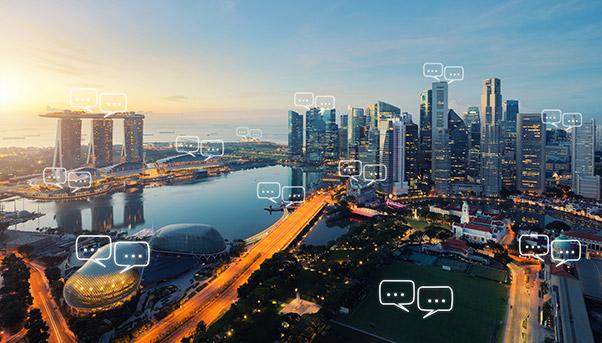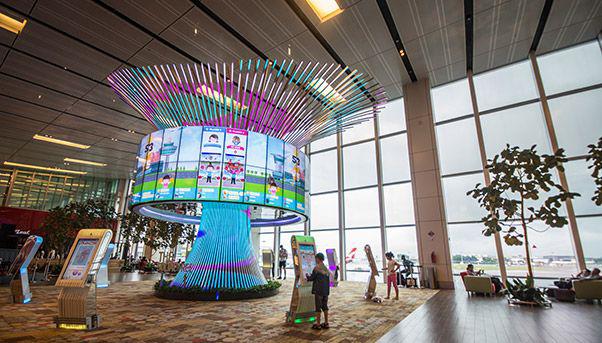
Senseable city, more than a “smart city”
Carlo Ratti is an architect and a town planning globe trotter. For him, inventing the city of the future is a passion, and not just a profession. A city that is increasingly intelligent, and capable of fully integrating the digital revolution into its infrastructure, and into daily life. This is why he decided to create the Senseable City Lab in 2004, at the Massachusetts Institute of Technology, of which he is Co-Director. He studied Engineering at Turin’s Polytechnic University, and at the Ecole des Ponts in Paris. Subsequently, he studied Architecture and Information Technology at Cambridge, in England. It is at the MIT, where he enters with a Fulbright scholarship, that he is “captivated by an interest for new technology,” because not only does it promise «to provide exciting transformations in the communication, transport and production techniques field», but it also stirs «a new concept of town planning and urban analysis, right at the juncture where the physical world meets the digital one», he said. An idea expressed through its own language, through semantics of innovation: the “Senseable City.” Beyond the smart city concept. To paraphrase Ratti’s words,«the more human this city is, capable of sensing through digital sensors, the more it can meet its citizens’ needs». This new type of city is make possible thanks to «continuous use of digital technologies and of the so-called Internet of Things (IoT), both in our lives and within our city spaces, which began some twenty years ago, and is destined to intensify during the following years. This allows us to find new solutions to old problems: from mobility with driver-less cars, to energy consumption, water and pollution issues, waste disposal and citizen participation».
Digital technology at the service of cities: the Internet of the Streets
It is an urban reality where asphalt and concrete are now often increasingly merged with silicon. «I believe that digital technology can help to make the physical and material world function in a better way»,
he explained. But what does a reality made with so many intelligent
infrastructure mean? «Through the CRA (Carlo Ratti Associati) firm, we
presented our concept for the Smart Road system, which
ANAS aims at implementing in the following years on Italian roads and
highways», he said. «We wanted to make the most of the potential offered
by digital technology, to combine digital and physical infrastructure,
aiming at collecting more precise data on the actual conditions of
Italian highways».
That project specifically calls for the new infrastructure to «revolve
around a series of poles incorporating WI-FI in-motion technology
sensors and services. On each of these poles, there will be a charging
station where drones can take off and start their road monitoring
activities. The system, thanks to the data collected by these poles, can
provide real-time information to drivers on actual road conditions.
Direct and custom messages can be sent to each driver’s mobile phone or
to the car map navigation system of each vehicle». But the project
“concept” doesn’t end here. «The subsequent phase will include merging
the data processed by the road system, with the information that has
already been collected from each car. This will create what could be
called ‘the Internet of the Road.’ This scenario will start to become reality during the following years, when driver-less cars will begin to be the norm».
Smart cities for a more sustainable future
Future innovations continue, said Ratti: among new research, there’s a «project to define criteria capable of measuring ethnic and social segregation in different parts of the world». The objective is to «merge data concerning costs in certain neighborhoods with data concerning phone calls between people belonging to different social groups. The central idea is to understand how different cities can heal social breaches, and how we can learn from cities offering more positive results».

Changi Airport, Singapore
The path heading towards tomorrow’s cities is not a uniform one, in global terms. No city is advancing in every area, said Ratti – but experiments are being shared and are multiplying. «In Asia, Singapore has become a large driverless mobility lab. It is also the first city in the world that introduced electronic road pricing, a payment system for infrastructure use, which aims at managing traffic congestion. Boston, in the United States, since 2010, through the Mayor’s new Office of New Urban Mechanics, aims at transforming citizens in city “drivers”: inviting them to participate in experiments for improving the quality of life, education and for enhancing public spirit, while also always including service networks and infrastructure. Europe’s Copenhagen has, instead, greatly focused on sustainability. It wants to become the first large ‘carbon neutral’ city, with zero emissions by 2025».
Leapfrogging and futurecraft
Cities of the developed world are not the only ones appointed to this
main role for this transformation process. «Let’s talk about
leapfrogging», explained Ratti. «It’s one of the key words for
understanding technological and social evolution in different developing
countries, beginning from the African continent. This phenomenon allows
those ‘left behind’ countries to leap ahead of current leaders.
Smartphones are the classic example: most African countries avoided cabled connection and directly used wireless technology. Smartphones
are also often used in new, ingenious ways that are more sophisticated
compared to how they are being used in Europe or in the United States».
This science of “possible cities” includes a method that helps their invention. It is called “futurecraft,”
and is defined as a symbiotic development of ideas for cities made by
both designers and the public. Ratti described it as a method «that
helps to bring up questions about the future, not to predict it, but to
try and build it». This can be summarized in a single question: What
would happen if?
Ratti summed up by saying: «If we do accept this evolutionary vision, a
fundamental question arises, which is: how can a designer accelerate
changes in the artificial world? In continuing this biological analogy,
the designer’s role could produce ‘anomalies’ (as new ideas). He would
then become what in Biology is called a mutagenic – an agent causing
mutation. In Nature, mutations are casual, while in the artificial
world, it is futurecraft that guides them».
A new “opensource” approach applied to architecture
This design of the future also sees a change to how architecture is conceived. Ratti, in fact, stated that a new “opensource”
approach is now the norm, because since the Internet was created the
way designing is carried out has changed. It is now more participative.
The architect-hero model, so common during the last century, has now
been abandoned. Ratti is already imagining «open source projects, which can be worked on by many people, with the contribution of end users».
A totally new professional figure could result from these experiments:
«A less ego-oriented Architect who dedicates himself/herself to
orchestrating the actual project. An orchestra director capable of
uniting voices, a coral architect, one who harmonizes».
Ratti, despite having the future as companion, doesn’t
like to predict it. And he doesn’t provide directions to what his ideal
city would be. This, in any case, doesn’t mean that imagination and
design are lacking in any way. «I like to imagine our new future like a New Babylon, the magnificent urban utopia on which Constant worked for two decades during, approximately, the middle of the 20th century».
Ratti’s dream is, in fact, to contribute to reaching closer to the homo
ludens model, «always on the move, playing in an open city: the
world».

